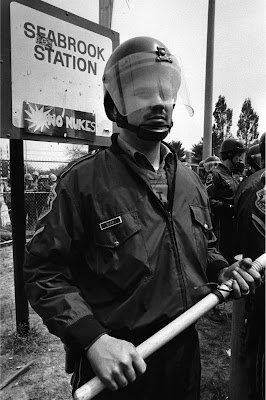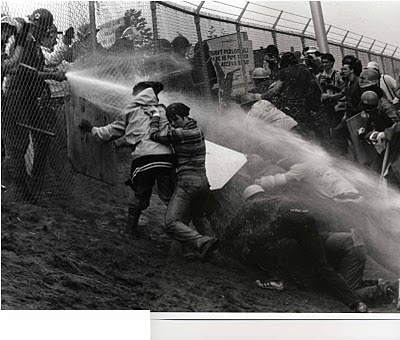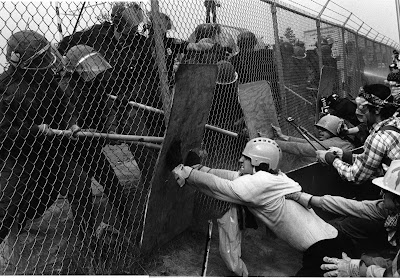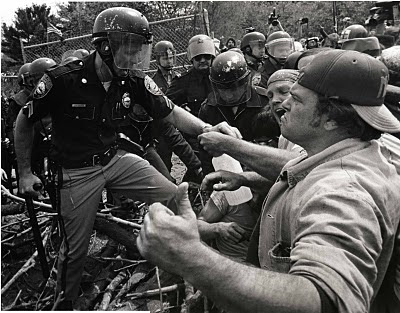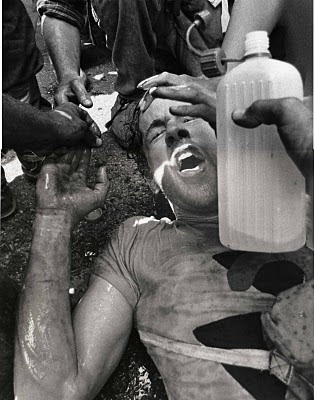One member of a Tyngsboro, Ma. water skiing duo loses his grip and lands sideways while his partner tries to avoid him (© Michael Maher, The Lowell (Ma.) Sun).

The Photo:
A weekend water skiing show was scheduled on a lake in Tyngsboro, Ma., and I was asked to shoot a promotional picture a few days in advance. When I arrived, two performers offered to let me photograph a preview of their acrobatic water skiing. Before we started, the leader of the team remarked that he hoped I would publish a picture of them doing things right, not slipping or falling. Photographers, he said, prefer the shots of them falling, and those are the pictures most often published. Never having shot water skiing before, I told him I would try to emphasize photos of their successes. I climbed into the motorboat, as they jumped into the water, donned their water skis, and grabbed the ropes. When the boat accelerated, the two of them were pulled along on their water skis. They skied very impressively, exchanging positions, going over high jumps, one climbing on the other’s shoulders, and I got several pictures of their stunts. When they slipped on a very difficult stunt, I shot that photo, too. Sure enough, when I reviewed all the pictures, their fall was a far better shot than the photos of them skiing flawlessly. My newspaper published their fall picture big while the successful jump photo ran smaller. Later, a fellow photographer covering the actual water skiing show reported that both water skiers told him they really liked the shot of them falling.
3 Tips:
1) Water skiing can be a very acrobatic event, and the best photos are often when a skier slips or falls.
2) Shoot your photos from the back of the boat pulling the water skiers.
3) Another strong photo is when the skiers create patterns of waves with their skis.
